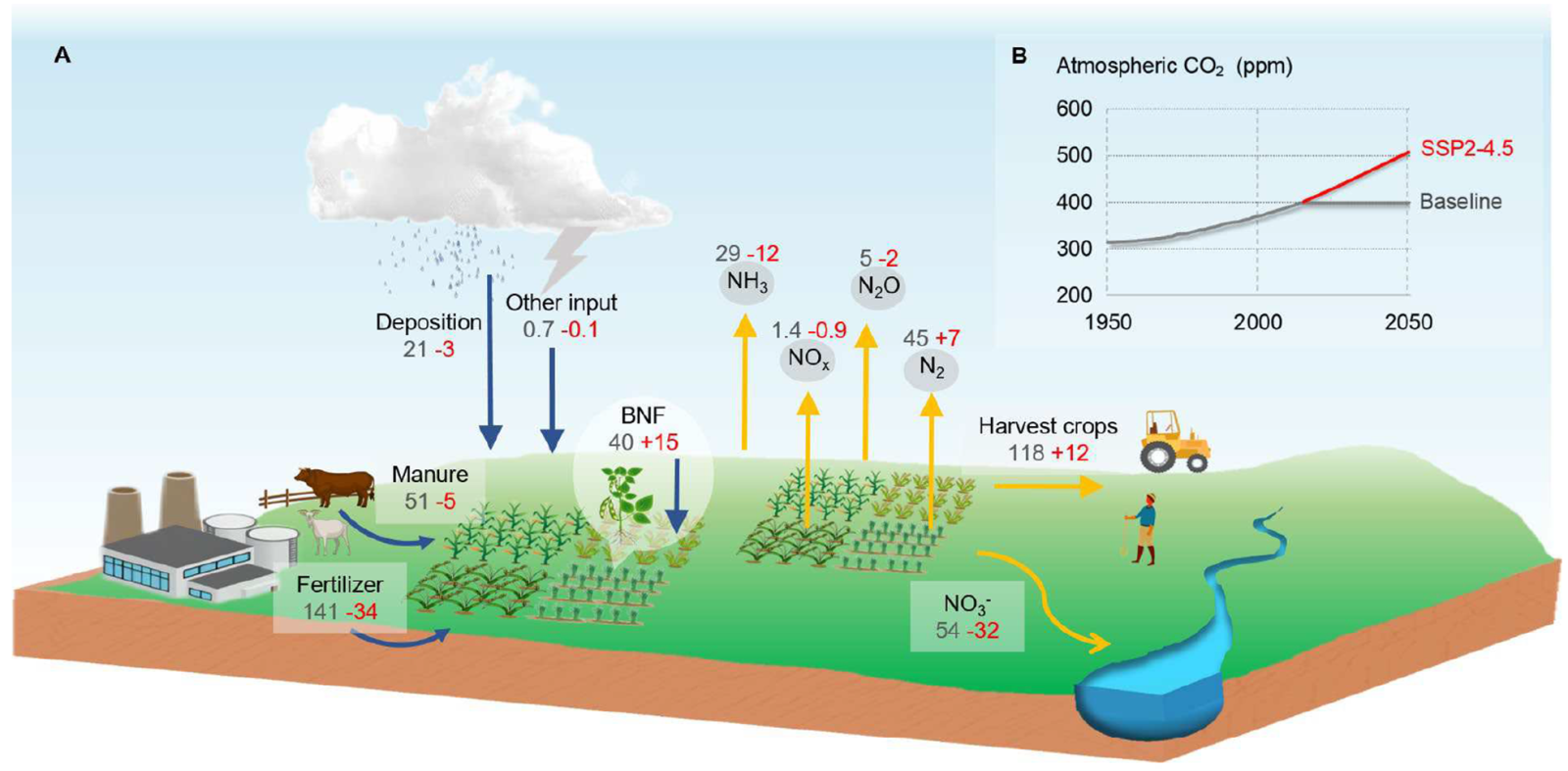June 22, 2023 | Nature Sustainability|
Croplands play a critical role in ensuring global food security and are responsible for the largest nitrogen flows on our planet. Elevated levels of atmospheric CO2 are a significant driver of climate change, impacting food production and environmental sustainability in various ways. However, our understanding of how the nitrogen cycle in croplands responds to elevated CO2 remains limited.
In this study conducted by researchers from Zhejiang University, China and the University of Edinburgh, UK, demonstrated that elevated CO2 (eCO2) can have a profound impact on the nitrogen and carbon cycles in croplands. Specifically, eCO2 leads to a synergistic enhancement of these cycles, resulting in a 19% increase in nitrogen-use efficiency and a remarkable 55% boost in biological nitrogen fixation within global croplands. This translates to higher crop nitrogen yields (+12 Tg yr−1), reduced fertilizer requirements (−34 Tg yr−1), and a significant decrease in reactive nitrogen loss (−46 Tg yr−1) by 2050 under future eCO2 scenarios.
Crucially, the study estimates that the impact of eCO2 on the altered nitrogen cycle in croplands could yield societal benefits totaling US$668 billion, primarily by preventing harm to human health and ecosystems. These benefits are anticipated to be most pronounced in China, India, North America, and Europe. Therefore, it is imperative to incorporate the influence of rising CO2 levels on the nitrogen cycle into advanced Earth system models to provide robust scientific evidence for informed policymaking.
Read more: Nitrogen cycles in global croplands altered by elevated CO2

Fig. 3 N flows in global croplands under elevated CO2 scenario (SSP2-4.5) by 2050. (A) N input and N output constitute the major N flows, represented by blue and yellow arrows, respectively. Values of N flows in dark grey denote flows in the baseline scenario with no climate change, while the red flows denote changes in flows under elevated CO2 scenario (SSP2-4.5) relative to the baseline scenario. The numbers are future values derived from our simulations in Tg N per year by 2050. (B) Historical and future atmospheric CO2 levels in the baseline scenario and elevated CO2 scenario during 1950-2050.





